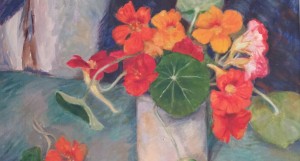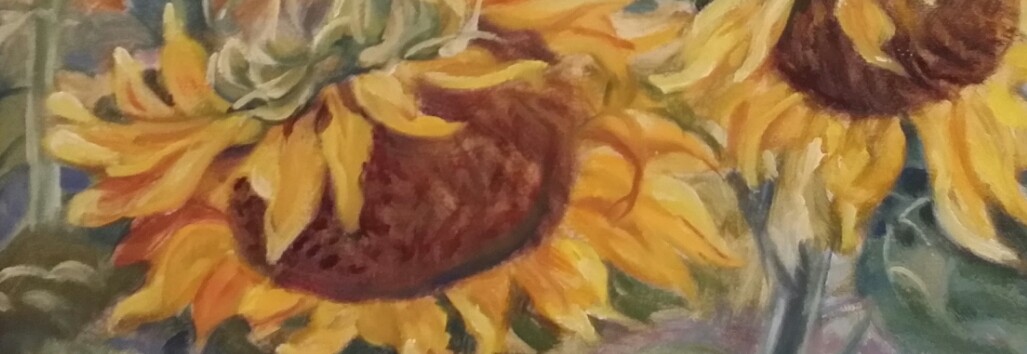It is hard not to ask questions. What would have happened if my parents had had an independent income as so many art students of their times did? What would have happened if they could have afforded to study in France or England? What if they could have moved to the American southwest as they once dreamed of doing? Would my mother’s health have improved? What if my father could have afforded to retire early?
And yet, we are left, all of us, simply with what is. And in the case of these Canadian artists, is a great deal. Ken Phillips and Marie Cecilia Guard invented their lives against a backdrop of painful circumstances which might well have made them quit. How hard it must have been for my father to sketch mattresses at Simpson’s Art Department, while continuing to follow his own vision for his art with the remaining dregs of his time at home. But he did.
Many of my mother’s women contemporaries gave up their art upon marriage. But, with my father’s wholehearted encouragement, my mother continued to paint
and draw all of her life.  There were few maps or models for women artists then, or for a would-be artist from a working background such as my father’s. But my parents never gave up. Instead, they honed their skills, rigorously criticizing and advancing their own work, and always studying art of all kinds for its lessons. The art they created was suffused with the inner vitality of their subjects.
There were few maps or models for women artists then, or for a would-be artist from a working background such as my father’s. But my parents never gave up. Instead, they honed their skills, rigorously criticizing and advancing their own work, and always studying art of all kinds for its lessons. The art they created was suffused with the inner vitality of their subjects.
Throughout their lives, these artists maintained an exceptional love and respect for each other and each sustained his/her work under the guidance and inspiration of the other.
But if their lives include the seeds of a story, this story is also an invitation to begin a dialog about both these artists’ work, and also about what it means to be an artist in Canada. With the encouragement of their favorite teacher, Arthur Lismer, my parents chose to swim lifelong against the current, to search for their vision and to hold to it.
As critic John Berger has insisted, the notion of freedom from tradition is illusory. It is the artist’s job to articulate an authentic response within the framework of continuity. At great personal and professional cost, my parents chose to remain true to the philosophy of their Group of Seven
teachers, while evolving in their own ways.
Their convictions are particularly timely: They supported the right of differing conceptions to share the public eye. But they also most emphatically
believed that art is a precious resource which belongs to all and which should be widely available.
As Henry Moore once affirmed, to be an artist is to believe in life. Through suffering and alienation, as the climate changed against classical artists, Phillips and Guard sought and found a unique vehicle for their intense response to the spirit in things. Through their personal crucible, they learned, as we all must learn, that it is the sense of reverence which shores us against the paralysis of despair.
